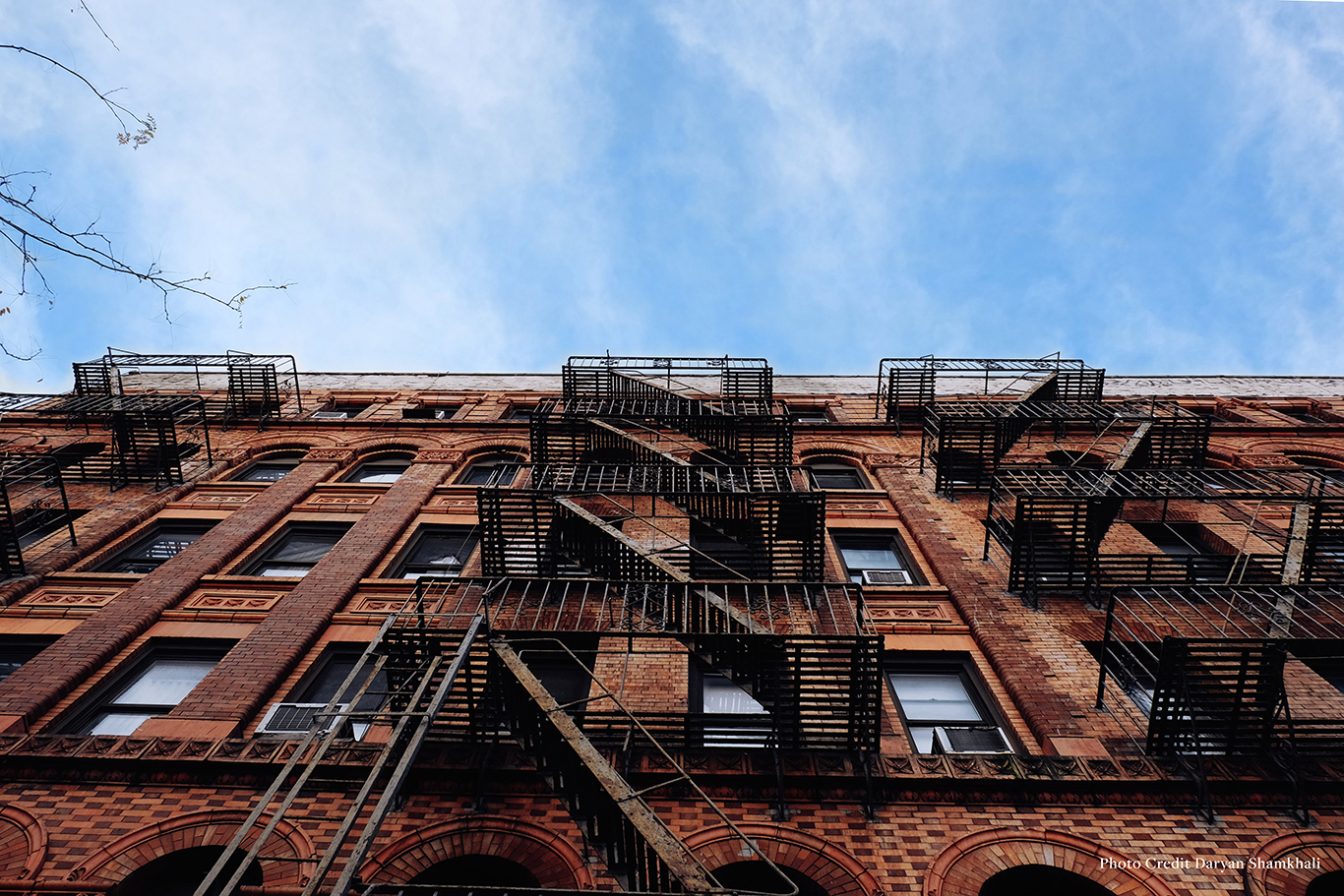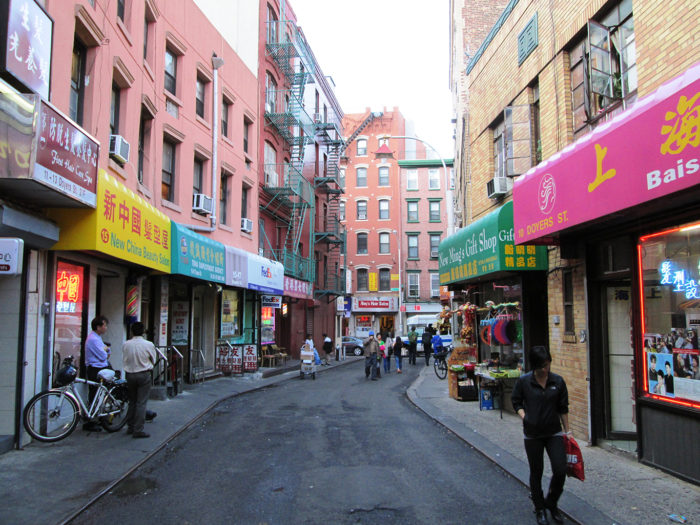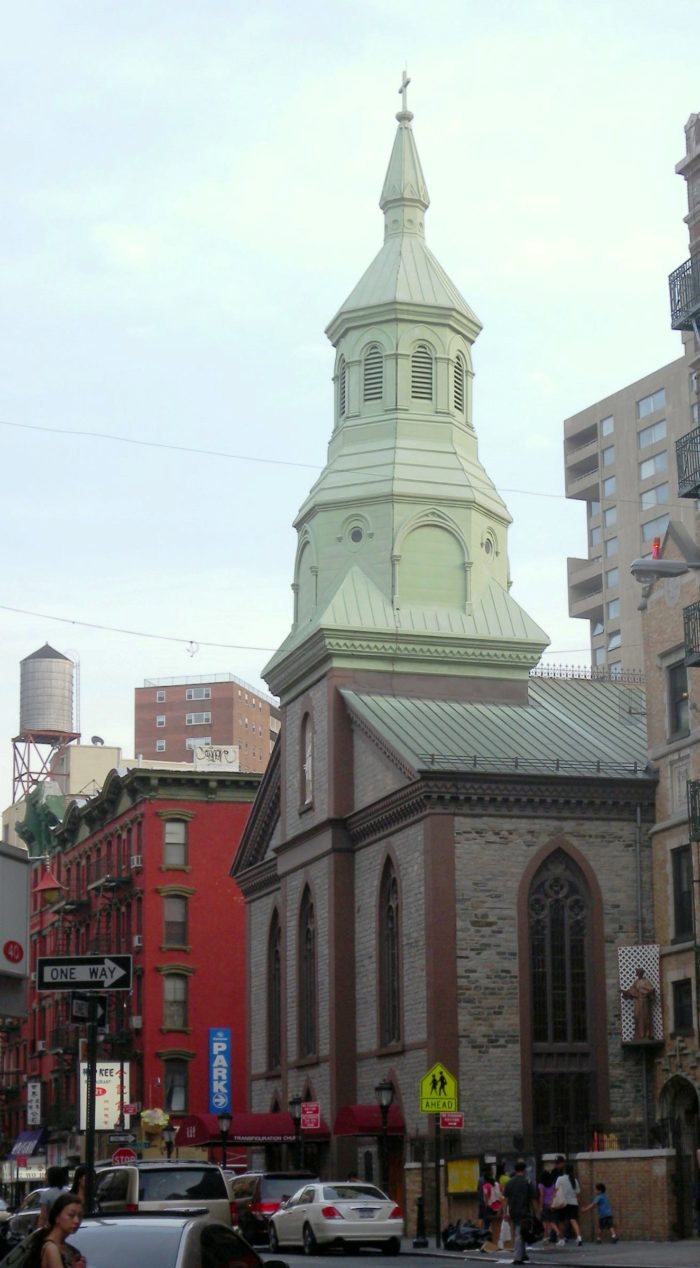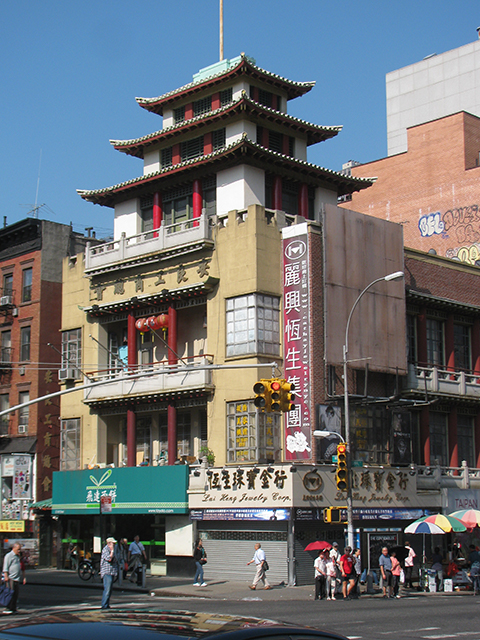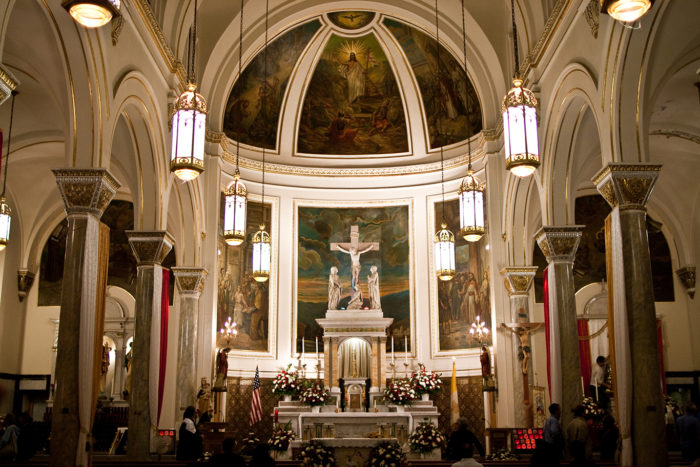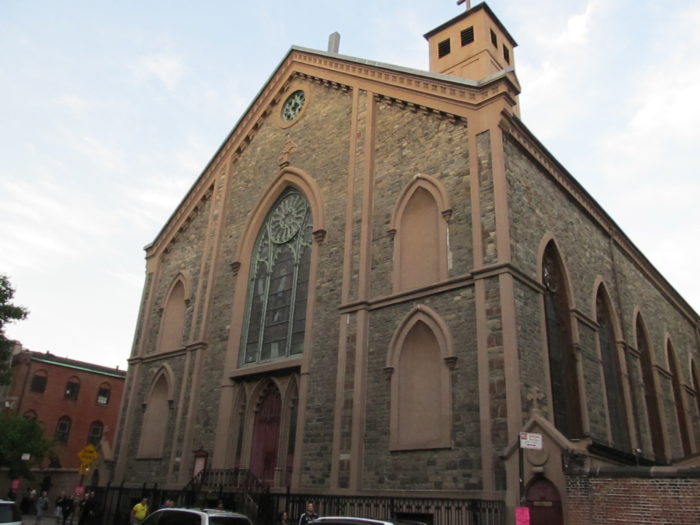In 2010 the adjacent neighborhoods of Chinatown and Little Italy were named a single National Register Historic District. That is only fitting, given that the boundary between Chinatown and Little Italy has shifted since the two communities developed in the 1870s.
At its peak in 1910, Little Italy was home to almost 10,000 Italian immigrants and their families; during this time, its southern border was considered Worth Street and its eastern border the Bowery. Chinatown has since expanded into much of that turf, encroaching as far north as Grand Street, with an Asian-American population of more than 52,000. Regardless of which streets serve as the borders of the two areas, however, the Chinatown and Little Italy Historic District is chockfull of sites that make it worthy of a walking tour.
Doyers Street
Between the Bowery and Pell Street
Doyers Street. Image: Beyond My Ken/Wikimedia
A scant one block long, Doyers Street is distinguished by a sharp bend in the middle. In the early 20th century, that bend was dubbed the Bloody Angle because of the gang warfare and killings that occurred there. The street gave rise to another term, “hatchet man,” because hatchets were a favorite weapon of the area’s tong gangs. Although The New York Times once reported that more people had died violently at the Bloody Angle than at any other intersection in the country, Doyers Street was also the site of the city’s first Chinese-language theater. The street’s turbulence now well in the past, that building is today home to upscale restaurant Chinese Tuxedo.
Church of the Transfiguration
25 Mott Street (at Mosco Street)
Church of the Transfiguration. Image: Jim.henderson/Wikimedia
Added to the National Register of Historic Places in 1980, the Church of the Transfiguration was built in 1801 as the Zion English Lutheran Church, then the Zion Protestant Episcopal Church. It was rebuilt in 1815 after being destroyed by a fire, but it did not gain its distinctive copper-clad octagonal tower until 1868, 15 years after the Episcopal congregation sold the building to the Roman Catholic parish. The oldest Catholic church building in the city, it has been nicknamed “the Church of Immigrants” because its congregation has been made up largely of immigrants—first Irish, then Italian, and today, Chinese.
Chinese Merchants Building
83 Mott Street (at Canal Street)
Chinese Merchants Building. Image: Eden, Janine and Jim/Flickr
The Chinese Merchants Building is easily identifiable by its multilevel pagoda-style roof. When it opened in 1950, it was one of the first structures in Chinatown to boast an Eastern aesthetic. The On Leong Tong (“Prosperity Peaceful Conduct”) merchants association that commissioned the building hired Andrew J. Thomas as the architect of record. However, Poy Gum Lee, a Chinatown native who became recognized for his “Chinese Deco” buildings in China, served as a consultant, and he is probably responsible for such elements as the multiple balconies and red pillars.
Church of the Most Precious Blood
113 Baxter Street (between Canal and Hester Streets)
Church of the Most Precious Blood. Image: Tom Thai/Flickr
As the National Shrine Church of San Gennaro, this church is a focal point of Little Italy’s annual Feast of San Gennaro: After a celebratory mass on the final Saturday of the 11-day street festival, the statue of the patron saint of Naples is removed from the church and carried through the streets in a candlelit procession. Completed in 1904, the white brick building is also home to a Neapolitan nativity scene that incorporates tableaux inspired by the Caravaggio painting The Seven Acts of Mercy.
Engine No. 55 Building
363 Broome Street (between Elizabeth and Mott Streets)
In the final decades of the 19th century, New York firehouses were designed with nearly as much emphasis on fashion as on functionality. This three-story structure, designed by R.H. Robertson, hews to that tradition. Over the arched main doorway is a stone relief, carved to resemble a cloth banner, that declares the engine number; elaborate carved leaf-and-ribbon motifs surround the oval windows of the first floor; stone lion’s heads protrude between the cornice and the third-floor windows. As an aside, this was the station of actor Steve Buscemi when he was one of New York’s bravest.
Basilica of St Patrick’s Old Cathedral
260-264 Mulberry Street (between Prince and Houston Streets)
Basilica of St Patrick’s Old Cathedral. Image: Ken Lund/Flickr
This was the city’s original St. Patrick’s Cathedral and the seat of the Roman Catholic Archdiocese of New York until the better-known namesake was built in 1879. When this structure was completed in 1815, it was the city’s largest church. America’s first male saint, John Neumann, was ordained to priesthood here in 1836. That was also around the time that the brick wall was built around the cathedral, to protect it from anti-Catholic mobs. The only church in the New York archdiocese to be named a basilica by the Vatican, it was added to the National Register of Historic Places in 1977.


